|
Search, browse, and study this dictionary to learn more about the early American, Christian language. 
 1828.mshaffer.com › Word [seal]
1828.mshaffer.com › Word [seal]
SEAL, n. The common name for the species of the genus Phoca. These animals are ampibious, most of the inhabiting the sea coasts, particularly in the higher latitudes. They have six cutting teeth in the upper jaw, and four in the lower. Their hind feet are placed at the extremity of the body, in the same diretion with it, and serve the purpose of a caudal fin; the fore feet are also adapted for swimming, and furmished each with five claws; the external ears are either very small or wanting. There are numerous species; as the leonina, sometimes 18 feet in length, and the jubata, sometimes 25 feet in length, with a name like a lion, both called sea-lion, and found in the southern seas, and alo in the N. Pacific; the ursina, or sea bear, 8 or 9 feet in length, and covered with long, thick bristly hair, found in the N. Pacifac; and the common seal frome 4 to 6 feet in length, found generally throughout the Atlantic and the seas and bays communicating with it, covered with short, stiff, glossy hair, with a smooth head without external ears, and with the fore legs deeply immersed in the skin. Seals are much sought after for their skins and fur. SEAL, n. [L. sigillum.] 1. A piece of metal or other hard substance, usually round or oval, on which is ingraved some image or device, and sometimes a legend or inscription. This is used by idividuals, corporate bodies and states, for making impressions on wax upon instuments of writing, as an evidence of their authenticity. The king of England has his seal and his privy seal. Seals are sometimes worn in rings.
|
Evolution (or devolution) of this word [seal]
| 1828 Webster | 1844 Webster | 1913 Webster |
|---|
SEAL, n. The common name for the species of the genus Phoca. These animals are ampibious, most of the inhabiting the sea coasts, particularly in the higher latitudes. They have six cutting teeth in the upper jaw, and four in the lower. Their hind feet are placed at the extremity of the body, in the same diretion with it, and serve the purpose of a caudal fin; the fore feet are also adapted for swimming, and furmished each with five claws; the external ears are either very small or wanting. There are numerous species; as the leonina, sometimes 18 feet in length, and the jubata, sometimes 25 feet in length, with a name like a lion, both called sea-lion, and found in the southern seas, and alo in the N. Pacific; the ursina, or sea bear, 8 or 9 feet in length, and covered with long, thick bristly hair, found in the N. Pacifac; and the common seal frome 4 to 6 feet in length, found generally throughout the Atlantic and the seas and bays communicating with it, covered with short, stiff, glossy hair, with a smooth head without external ears, and with the fore legs deeply immersed in the skin. Seals are much sought after for their skins and fur. SEAL, n. [L. sigillum.] 1. A piece of metal or other hard substance, usually round or oval, on which is ingraved some image or device, and sometimes a legend or inscription. This is used by idividuals, corporate bodies and states, for making impressions on wax upon instuments of writing, as an evidence of their authenticity. The king of England has his seal and his privy seal. Seals are sometimes worn in rings. |
SEAL, n.1 [Sax. seol, sele, syle; Sw. siäl.]The common name for the species of the genus Phoca. These animals are amphibious, most of them inhabiting the sea coasts, particularly in the higher latitudes. They have six cutting teeth in the upper jaw, and four in the lower. Their hind feet are placed at the extremity of the body, in the same direction with it, and serve the purpose of a caudal fin; the fore feet are also adapted for swimming, and furnished each with five claws; the external ears are either very small or wanting. There are numerous species; as the leonina, sometimes 18 feet in length, and the jubata, sometimes 25 feet in length, with a mane like a lion, both called sea-lion, and found in the southern seas, and also in the N. Pacific; the ursina, or sea-bear, 8 or 9 feet in length, and covered with long thick and bristly hair, found in the N. Pacific; and the common seal [P. vitulina,] from four to six feet in length, found generally throughout the Atlantic and the seas and bays communicating with it, covered with short, stiff, glossy hair, with a smooth head without external ears, and with the fore legs deeply immersed in the skin. Seals are much sought after for their skins and fur. – Ed. Encyc. Encyc.
SEAL, n.2 [Sax. sigel, sigle; G. siegel; D. zegel; Dan. seigl, segl; Fr. sceau; Arm. syell; L. sigillum; It. sigillo; Sp. sigilo. It is uncertain what was the original signification of seal, whether an image or some ornament. In Saxon, the word signifies a necklace, or ornament for the neck, a stud or boss, a clasp, and a seal.]- A piece of metal or other hard substance, usually round or oval, on which is engraved some image or device, and sometimes a legend or inscription. This is used by individuals, corporate bodies, and states, for making impressions on wax upon instruments of writing, as an evidence of their authenticity. The king of England has his great seal and his privy seal. Seals are sometimes worn in rings.
- The wax set to an instrument, and impressed or stamped with a seal. Thus we give a deed under hand and seal. Wax is generally used in sealing instruments, but other substances may be used.
- The wax or wafer that makes fast a letter or other paper.
- Any act of confirmation. – Milton.
- That which confirms, ratifies, or makes stable; assurance. – 2 Tim. ii.
- That which effectually shuts, confines, or secures; that which makes fast. – Rev. xx.
SEAL, v.i.To fix a seal.
I will seal unto this bond. [Unusual.] – Shak.
SEAL, v.t. [Sw. besegla, försegla; Dan. besegler, forsegler; G. siegeln; D. zegelen. The root signifies, probably, to set, to fix, to impress, or to cut or engrave.]- To fasten with a seal; to attach together with a wafer, or with wax; as, to seal a letter.
- To set or affix a seal as a mark of authenticity; as, to seal a deed. Hence,
- To confirm; to ratify; to establish.
And with my hand I seal nor true hearts' love. – Shak.
When therefore I have performed this, and have sealed to them this fruit, I will come by you into Spain. Rom. xv.
- To shut or keep close; sometimes with up. Seal your lips; seal up your lips. – Shak.
Open your ears, and seal your bosom upon the secret concerns of a friend. – Dwight.
- To make fast.
So they went and made the sepulcher sure, sealing the stone and setting a watch. – Matth. xxvii.
- To mark with a stamp, as an evidence of standard exactness, legal size, or merchantable quality. By our laws, weights and measures are to be sealed by an officer appointed and sworn for that purpose; and leather is to be sealed by a like officer, as evidence that it has been inspected and found to be of good quality. – Laws of Conn.
- To keep secret.
Shut up the words, and seal the book. – Dan. xii. Is. viii.
- To mark, as one's property, and secure from danger. – Cant. iv.
- To close; to fulfill; to complete; with up. – Dan. ix.
- To imprint on the mind; as, to seal instruction. – Job xxxiii.
- To inclose; to hide; to conceal. – Job xiv.
- To confine; to restrain. – Job xxxiii.
- In architecture, to fix a piece of wood or iron in a wall with cement. – Encyc.
|
Seal
- Any
aquatic carnivorous mammal of the families Phocidæ and
Otariidæ.
- An engraved or inscribed stamp, used for
marking an impression in wax or other soft substance, to be attached
to a document, or otherwise used by way of authentication or
security.
- To set or affix a seal
to; hence, to authenticate; to confirm; to ratify; to establish; as,
to seal a deed.
- To affix one's seal, or
a seal.
- Wax, wafer, or other tenacious substance,
set to an instrument, and impressed or stamped with a seal; as, to
give a deed under hand and seal.
- To mark with a stamp, as an evidence of
standard exactness, legal size, or merchantable quality; as, to
seal weights and measures; to seal silverware.
- That which seals or fastens; esp., the wax
or wafer placed on a letter or other closed paper, etc., to fasten
it.
- To fasten with a seal; to attach together
with a wafer, wax, or other substance causing adhesion; as, to
seal a letter.
- That which confirms, ratifies, or makes
stable; that which authenticates; that which secures; assurance.
- Hence, to shut close; to keep close; to
make fast; to keep secure or secret.
- An arrangement for preventing the entrance
or return of gas or air into a pipe, by which the open end of the pipe
dips beneath the surface of water or other liquid, or a deep bend or
sag in the pipe is filled with the liquid; a draintrap.
- To fix, as a piece of iron in a wall, with
cement, plaster, or the like.
- To close by means of a seal; as, to
seal a drainpipe with water. See 2d Seal, 5.
- Among the Mormons, to confirm or set apart
as a second or additional wife.
|
| 1828 Webster | 1844 Webster | 1913 Webster |
|---|
Thank you for visiting!
- Our goal is to try and improve the quality of the digital form of this dictionary being historically true and accurate to the first American dictionary. Read more ...
- Below you will find three sketches from a talented artist and friend depicting Noah Webster at work. Please tell us what you think.
Divine Study
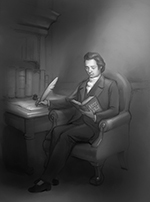 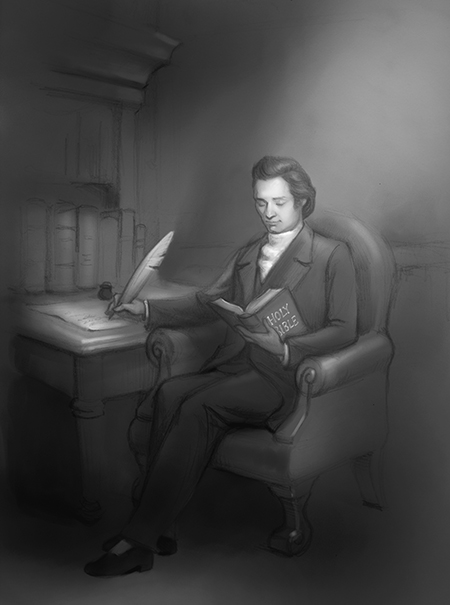
Divine Study
|
Window of Reflection
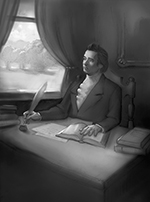 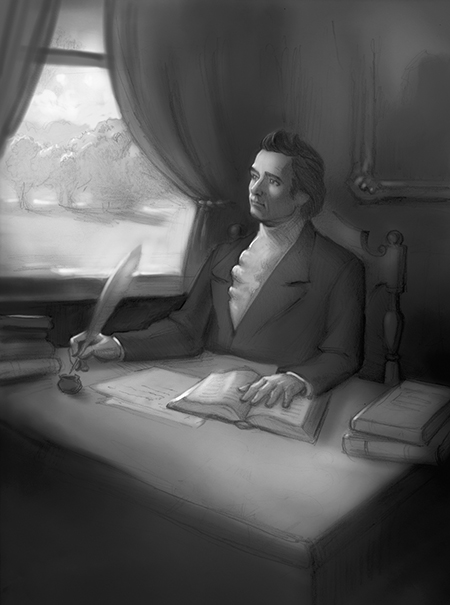
Window of Reflection
|
Enlightening Grace
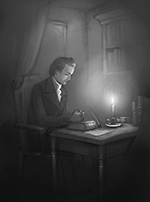 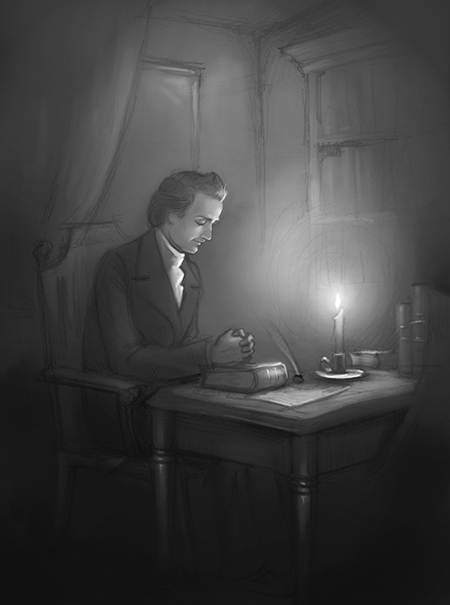
Enlightening Grace
|
159
|
932 |
111
|
1018 |
186
|
1046 |

Seal SEAL, noun The common name for the species of the genus Phoca. These animals are ampibious, most of the inhabiting the sea coasts, particularly in the higher latitudes. They have six cutting teeth in the upper jaw, and four in the lower. Their hind feet are placed at the extremity of the body, in the same diretion with it, and serve the purpose of a caudal fin; the fore feet are also adapted for swimming, and furmished each with five claws; the external ears are either very small or wanting. There are numerous species; as the leonina, sometimes 18 feet in length, and the jubata, sometimes 25 feet in length, with a name like a lion, both called sea-lion, and found in the southern seas, and alo in the noun Pacific; the ursina, or sea bear, 8 or 9 feet in length, and covered with long, thick bristly hair, found in the noun Pacifac; and the common seal frome 4 to 6 feet in length, found generally throughout the Atlantic and the seas and bays communicating with it, covered with short, stiff, glossy hair, with a smooth head without external ears, and with the fore legs deeply immersed in the skin. Seals are much sought after for their skins and fur. SEAL, noun [L. sigillum.] 1. A piece of metal or other hard substance, usually round or oval, on which is ingraved some image or device, and sometimes a legend or inscription. This is used by idividuals, corporate bodies and states, for making impressions on wax upon instuments of writing, as an evidence of their authenticity. The king of England has his seal and his privy seal. Seals are sometimes worn in rings. The wax set to an instument, and impressed or stamped with a seal Thus we give a deed under had and seel. Wax is generally used in sealing instruments, but other substances may be used. 3. The wax or wafer that makes fast a letter or other paper. 4. Any act of confirmation. 5. That which confirms, ratifies or makes stable; assurance. 2 Timothy 2:19. 6. That which effectually shuts, confines or secures; that which makes fast. Revelation 20:3. SEAL, verb transitive 1. To fasten with a seal; to attach together with a wafer or with wax; as, to seal a letter. 2. To set or affix a seal as a mark of authenticity; as, to seal a deed. Hence, 3. To confirm; to ratify; to establish. And with my hand I seal our true hearts' love. Shak. When therefore I hace performed this, and have sealed to them this fruit, I will come by you in Spain. Romans 15:28. 4. To shut or keep close; sometimes with up. Seal your lips; seal up you lips. Open your ears, and seal your bosom upon the secret conserns of a friend. Dwight. 5. To make fast. So they went and made the sepulcher sure, sealing the stone and settig a watch. Matthew 27:1. 6. To mark with a stamp, as an evidence of standard exactness, legal size, or merchantable quality. By our laws, weights and measures are to be sealed by an officer appointe and sworn for that purpose; and lether is to be sealed by a like officer, as evidence that it has been inspected and found to be of good quality. 7. To keep secret. Shut up the words, and seal the book. Daniel 11:1. Isaiah 8:16. 8. To mark as ones property, and secure from danger. 9. To close; to fulfill; to complete; with up. 10. To imprint on the ; as, to seal instruction. 11. To inclose; to hide; to conceal. 12. To confine; to restrain. 13. In architecture, to fix a piece of wood or iron in a wall with cement. SEAL, verb intransitive To fix a seal I will seal unto this bond. [Unusual.] Shak. |

|
| Hard-cover Edition |
367 |
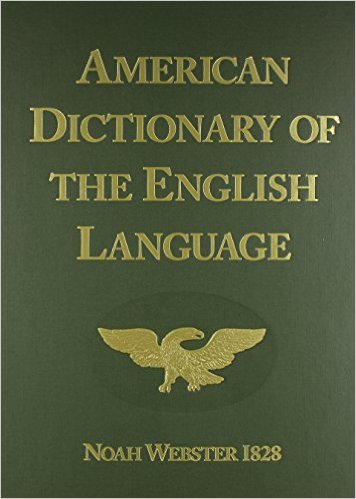 |
540 |
|
| Compact Edition |
352 |
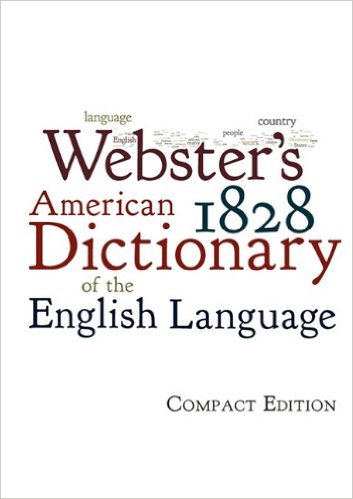 |
242 |
|
| CD-ROM |
303 |
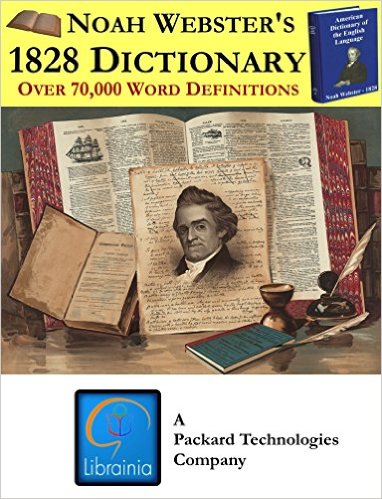 |
192 |
|
* As a note, I have purchased each of these products. In fact, as we have been developing the Project:: 1828 Reprint, I have purchased several of the bulky hard-cover dictionaries. My opinion is that the 2000-page hard-cover edition is the only good viable solution at this time. The compact edition was a bit disappointing and the CD-ROM as well. |
| [ + ] |
| Add Search To Your Site |
|
|
|
 1828.mshaffer.com › Word [seal]
1828.mshaffer.com › Word [seal]
